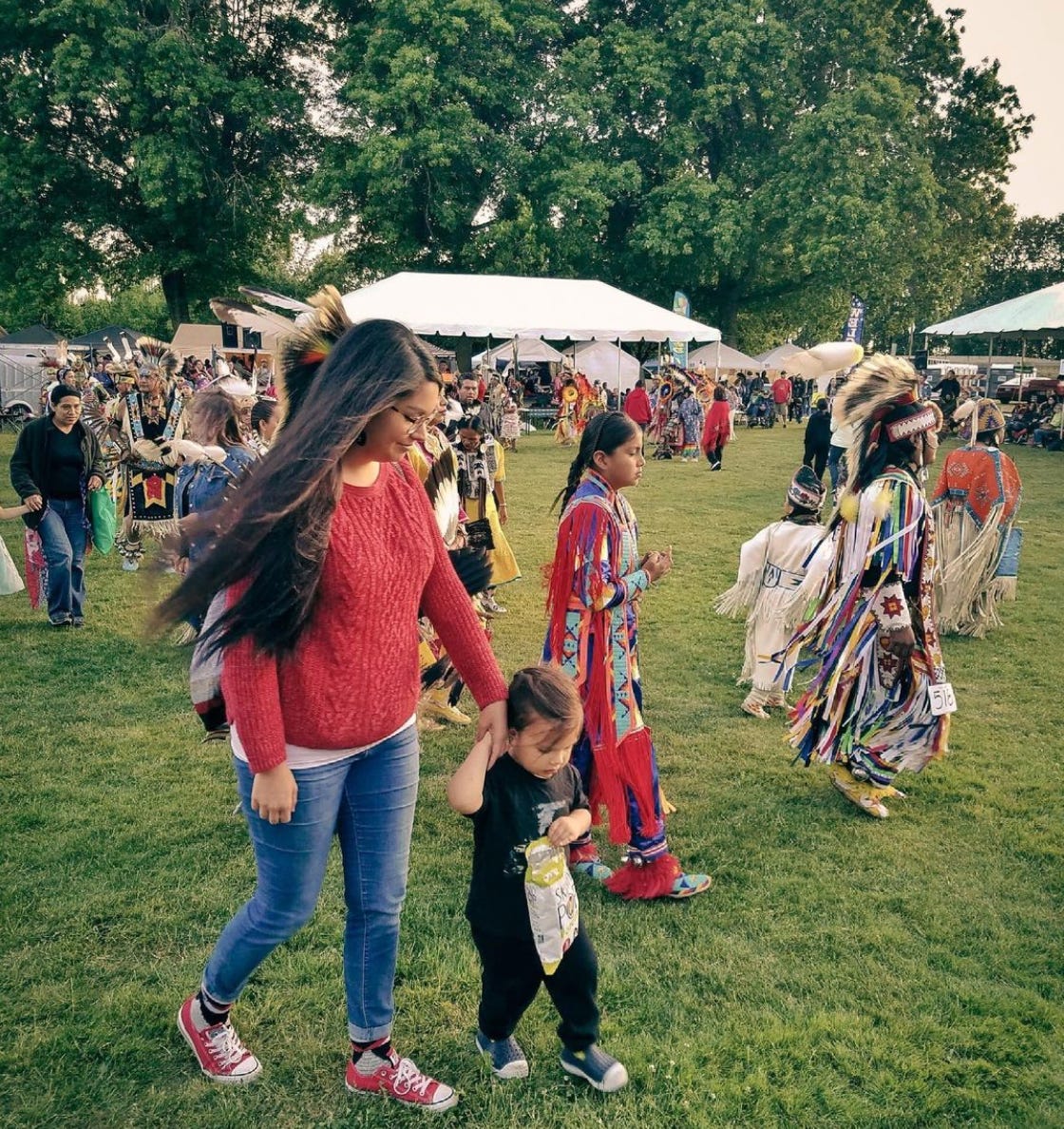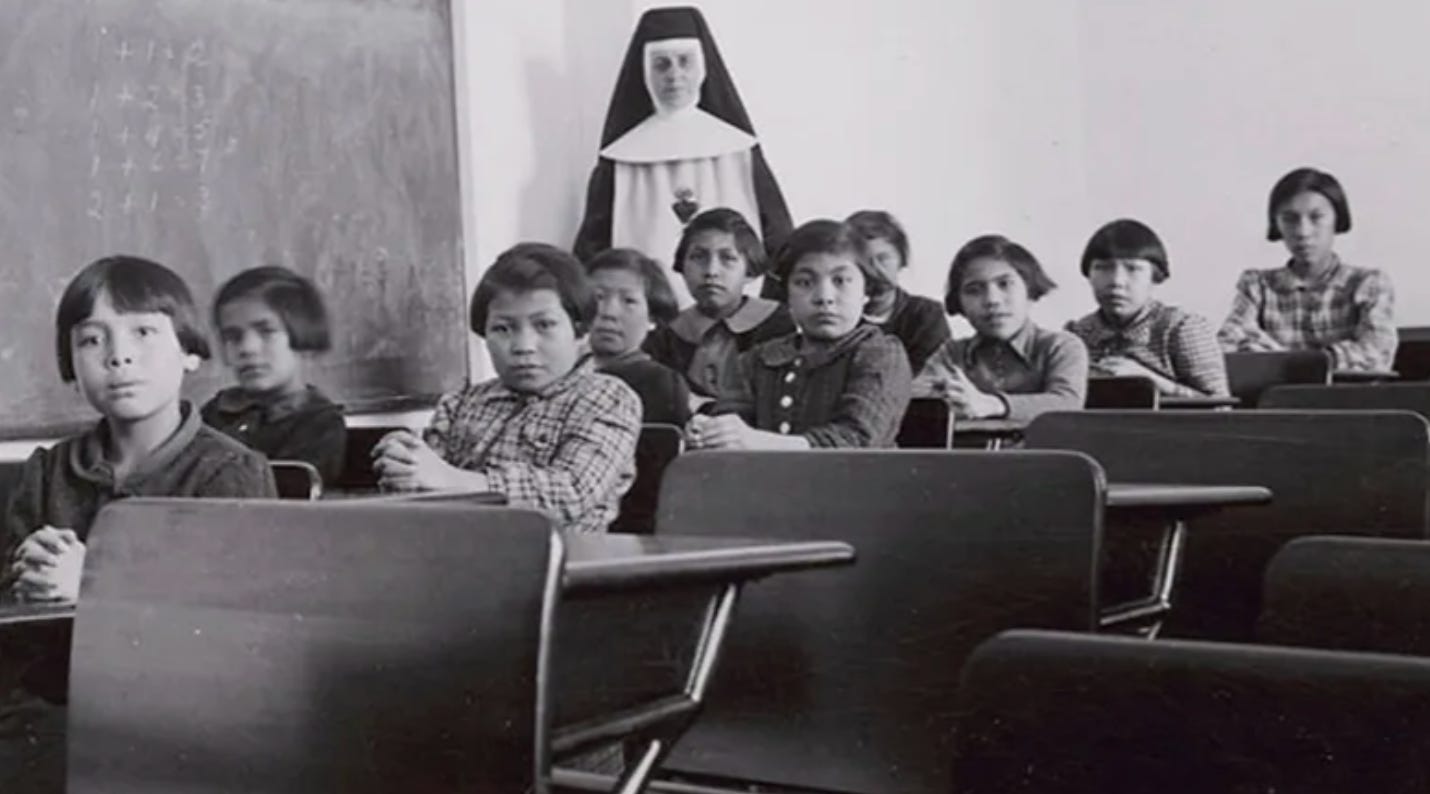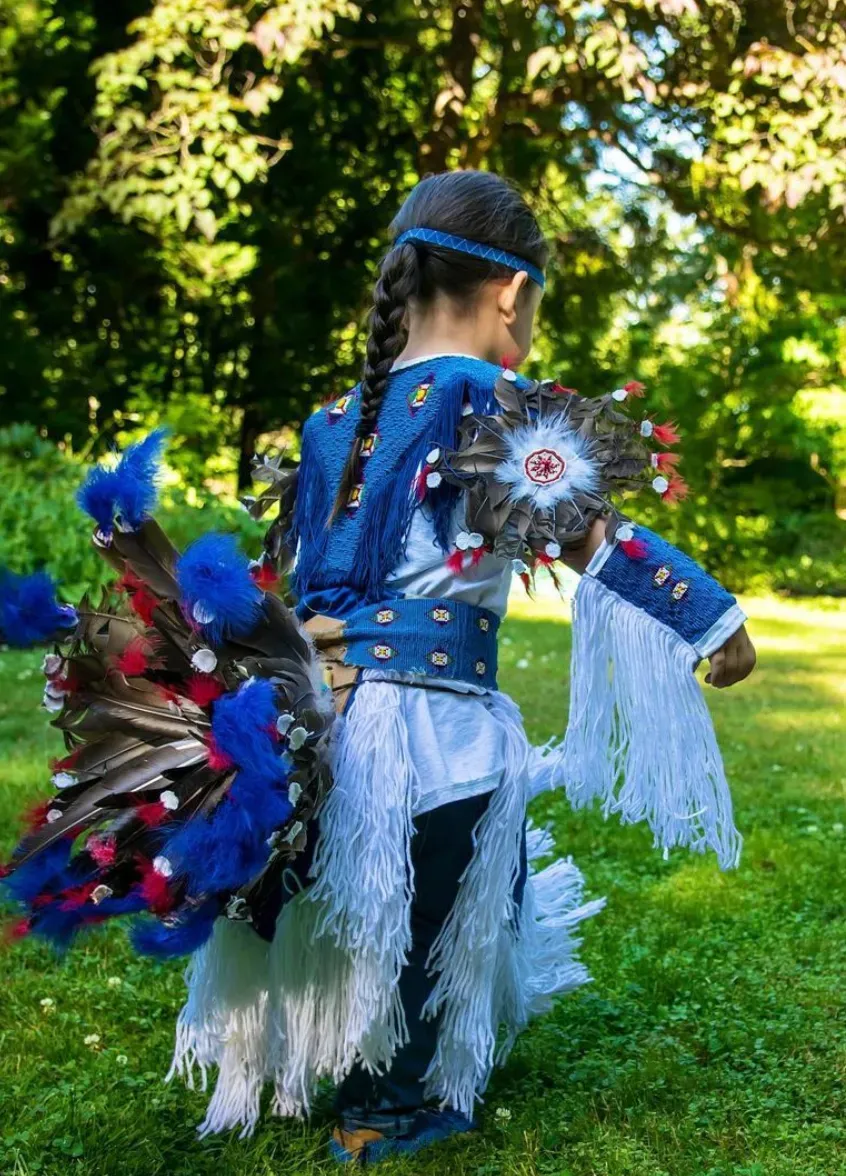A Nehiyaw woman from Beardy’s and Okemasis Cree Nation, Treaty 6 Territory, Jalynne Geddes is the artist behind the heirloom beadwork collection, Nehiyanahk Creations. She's built a beautiful community on Instagram. It is challenging, expansive and inclusive. In this piece, Geddes holds pain and hope in two outstretched hands. It is a necessary read as so many of us prepare to gather and celebrate the 4th of July. Please read it carefully and please share her words.
By Jalynne Geddes
I grew up going to powwows. On my reservation, the Beardy’s and Okemasis Cree Nation, it was an event my family waited for all year. We would go and see our friends and family dance. We would laugh and visit and eat good food like bannock or tacos made with fry bread. We loved powwow season. I felt so close to my ancestors. It’s a relationship I’m blessed to enjoy to this day.

At each powwow, a moment where all of the gaiety would be paused is when the veterans would enter the floor. Our veterans were always honoured, recognized and given respect. Our veterans are revered in our communities despite the fact that many of us have, at the very least, complicated feelings about what’s now known as the United States and Canada. And many more of us struggle to feel allegiance in any form to the countries that have devastated our Indigenous communities.
I think we revere our veterans so much because we can glimpse the torment they must have felt, fighting and showing brotherly love to a country that did not love them back. We dare not ignore that truth that exists in them.
I want to take a moment to talk about my favourite new TV show, Rutherford Falls.It follows the friendship of Native American woman, Reagan Wells, and her white best friend, Nick Rutherford. It documents their adventures as they both do what they think is best for their town and communities.
(Spoiler alert) In one episode, Nick is on the receiving end of humbling news and it completely shatters his perspective about his role in history. He calls Reagan, crying, and apologizes for being wrong. He says,
“I don’t get it. I thought I got it for so long in my life. I thought I was one of the people who got it. And I don’t get it. You tried to help me and I see that now. And I’m really so sorry.”
I watched that scene over and over again. I still go back and watch it every so often; Ed Helms, as Nick Rutherford, delivers a speech that many of us have been longing to hear. It feels therapeutic to see a small fantasy lived out on screen. Many don’t get it. Even those who have made an effort to study our perspective of history still might not get it. Not totally, anyway.
In the United States, Native Americans have more US veterans per capita than any other demographic. In fact, during World War 1, over 9,000 Native Americans served overseas. They fought for the country that, while they fought, denied them citizenship. They fought for the country that, while they fought, forcibly removed Native American children from their families and sent them off to boarding schools. All under the slogan of “Kill the Indian, and save the man.”
At these schools, young Indigenous children were abused in every kind of way - physically, sexually, emotionally. Many died. And as a result of these schools, our communities are dealing with lingering trauma. We have lost our languages, traditions, and practices; they were taken from us at the brunt end of a beating.

Canada has a nearly identical history. Many members of my family are survivors of these schools, including my mother. And for any who have been keeping an ear out for news on the Canadian Indian residential schools mass graves, we keep finding more and more little souls to mourn. Some as young as three years old.
This continent had a name before colonization.
I haven’t even yet mentioned the millions and millions of Indigenous peoples that died upon the initial colonization of so-called America. This continent had a name before colonization. And it wasn’t America. Different Native nations had different names for this land. Some called it, and continue to call it, Turtle Island. It is estimated that at least 60 million individuals were on Turtle Island at the time of contact; roughly 90 percent of that population was decimated. So much has been lost.
We are currently in the process of continuing the hard work of reclaiming what was lost. It is taxing but worth it. I’ve had to examine my own behaviours and see how I’ve upheld the wrong systems because I thought the closer to power I was, the better off I’d be. Undoing my own self-assimilation is agonizing.
We are an incredibly joyful and hopeful people, despite everything.
But each time we uncover more of what was lost, we not only feel the joy within our own souls, but we can feel it reverberate back to the ancestors who are rooting for us. We are an incredibly joyful and hopeful people, despite everything.
Again, it’s hard work. And to be honest, I don’t know when that trauma will be fully healed for my people. It’s going to take a while. It’s going to take everyone. It’s going to take dismantling white supremacy. And far too often, BIPOC people have felt like we have largely been doing this hard work alone.
My community believes that we are all related. Kinship is our goal. If we treated one another like we truly are related, how would that inform our choices with how we approach healing?
Another memory from my childhood was going to Round Dances. This is the way the Round Dance was taught to me.
We dance holding hands because we are all on this journey together.
It is a friendship dance, but one of higher friendship. Everyone holds hands in a circle and takes a step to the side together, dragging our other foot with us. That is how the dance goes; step and slide. The first step symbolizes a step into the future, the sliding step that follows symbolizes bringing our past with us; bringing good memories yes, but also the lessons we have learned. We dance holding hands because we are all on this journey together.
I keep thinking of what this could look like if this is how we approached healing and working together as we move forward. It means facing and looking at the past - every piece of it. It means wading through it so we can bring with us the necessary lessons that would give us tools to build a brighter future together. And it means joining hands and moving forward together.
I have great hopes that more people will join hands with us. We truly do need every last one of us.

